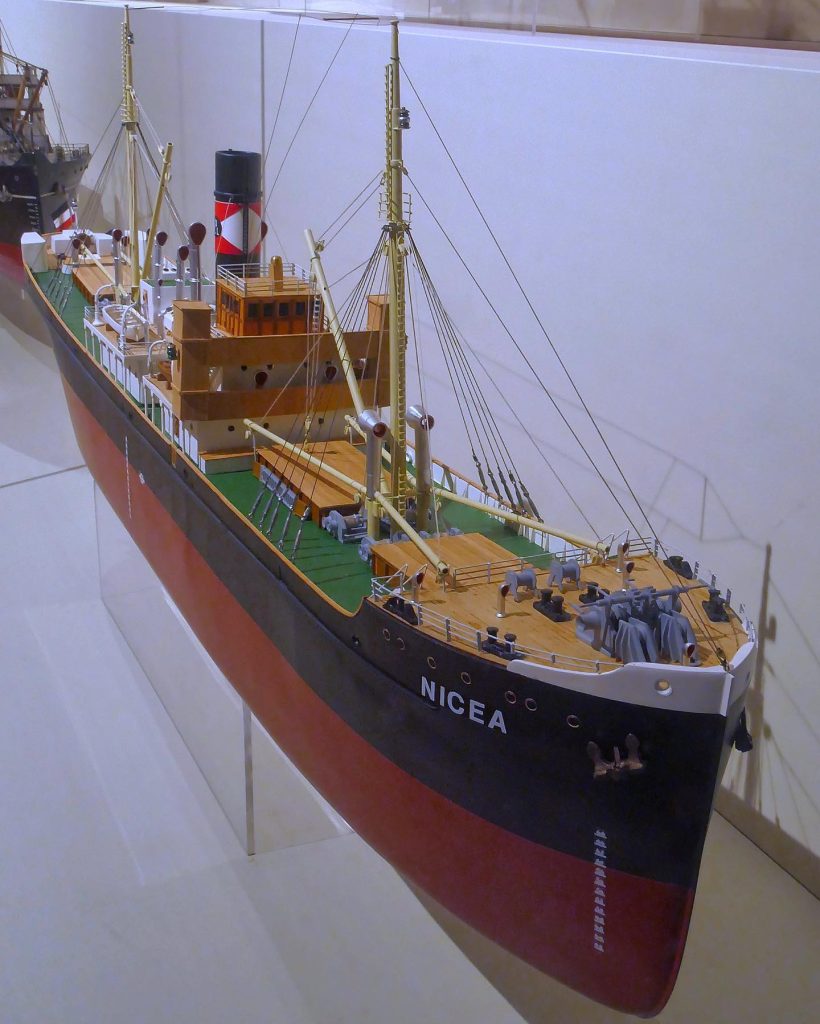
General cargo ship Nicea. Her 1:100 scale model by H. Reiche is part of our exhibition on the history of modern maritime logistics on deck 6 of the museum.
The „Nicea“ was a general cargo freighter delivered by the Lübecker Flender-Werke to the Deutsche-Levante Linie in 1923. In 1934, she went into the shipyard again – this time at the Deutsche Werft in Hamburg. There she received a forecastle extended by five meters, which increased her cargo capacity. In addition, her steam propulsion was improved with a powder-coal-fired boiler. This system had been experimented with since the 1820s, but it was not until around 100 years later that it became technically feasible. Instead of burning coal on the fire grate of the boiler, highly explosive coal dust is blown inside the boiler so that the entire boiler is used for combustion. The „Nicea“ was the first ship to use this system. It also had a system to grind the coal into dust before blowing it into the boiler. This was a safety measure, as storing coal dust in the ship’s bunkers posed an explosion hazard. The system worked well, but was not used on many ships. This was because steam engines fueled by liquid fuels proved more effective, and a few years later diesel engines became the standard in shipping. However, the pulverized coal-fired boiler is a system that is still used today in almost all coal-fired power plants.
The „Nicea“ was sold to the Navy in 1937, converted to a submarine tender and renamed the „Donau“. She was in service throughout the Second World War. The ship had survived the war and was lying near Flensburg when an explosion in one of the ammunition bunkers severely damaged the „Donau“ on July 14, 1945. She capsized and was subsequently scrapped on the spot.
Her 1:100 scale model by H. Reiche is part of our exhibition on the history of modern maritime logistics on deck 6 of the museum.
